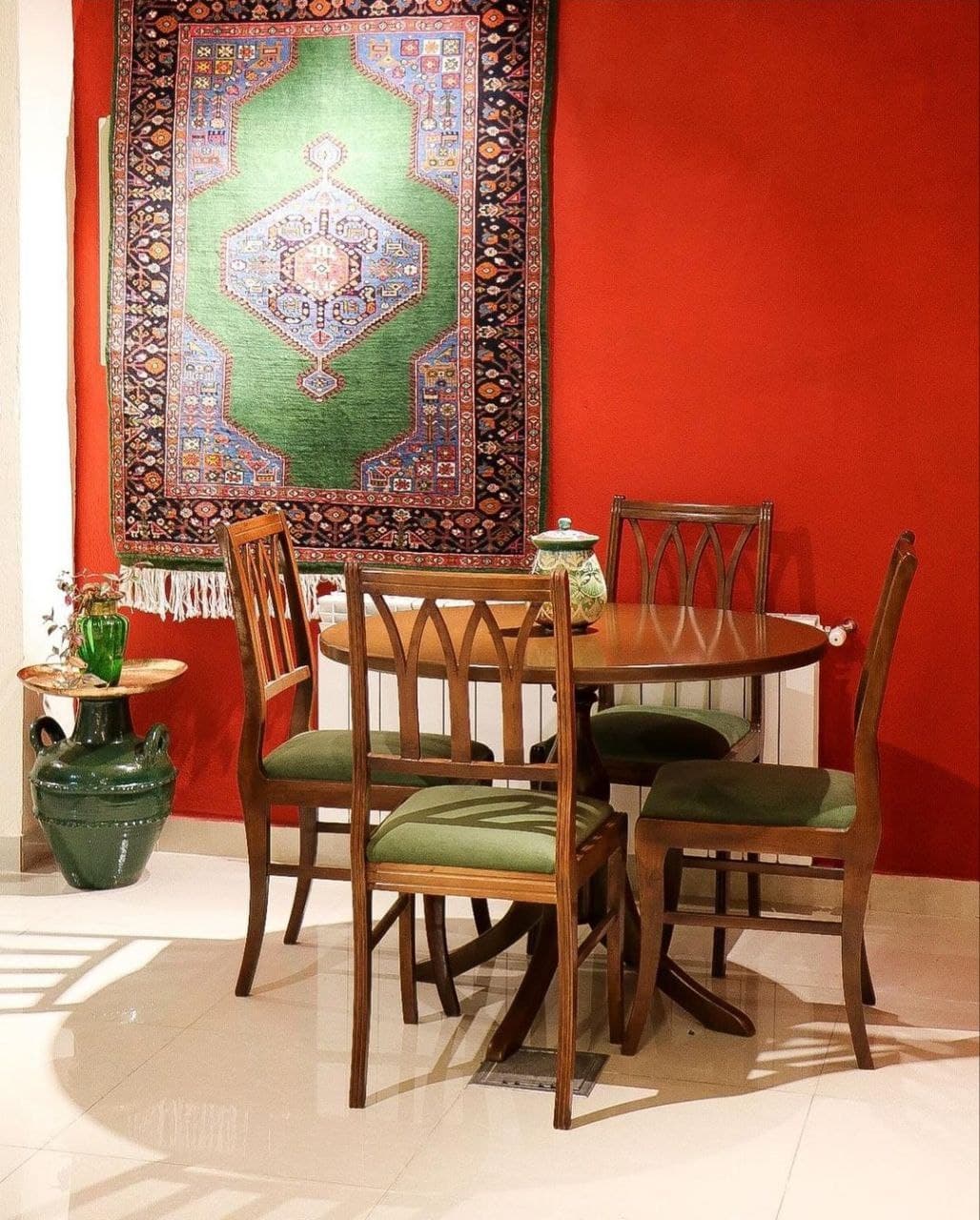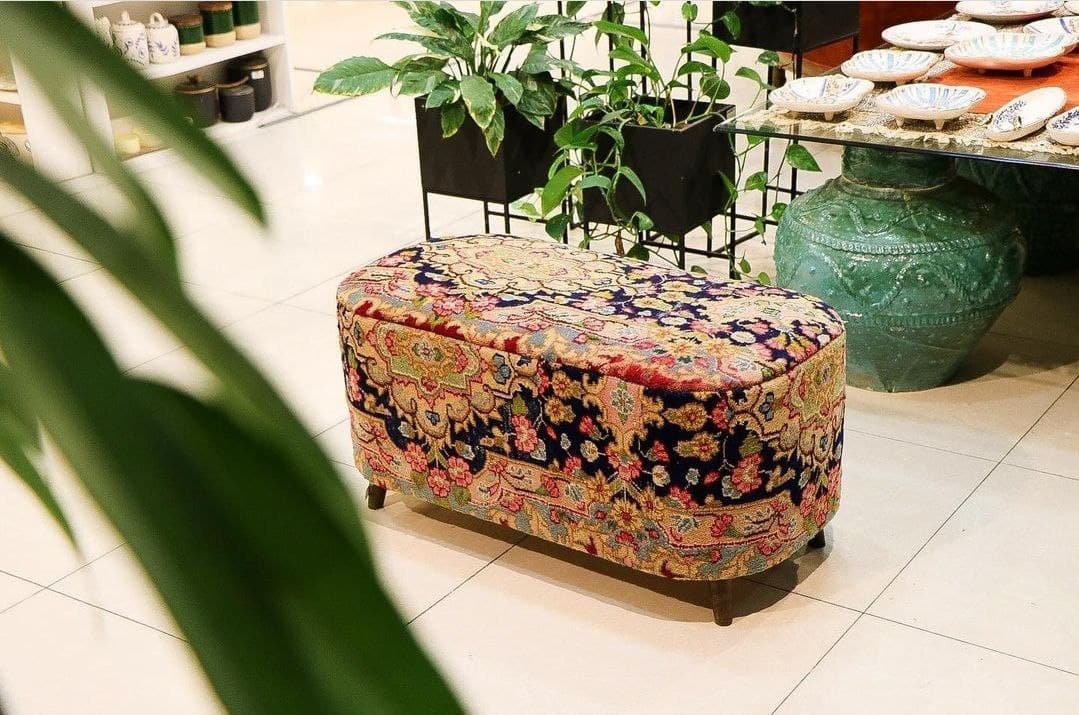Handwoven carpet Comparison of cotton, wool and silk types
Handwoven shop carpet Comparison can be made from various materials, including cotton, wool, and silk. Each material has its own unique characteristics that affect the appearance, feel, durability, and cost of the carpet. Here is a comparison of cotton, wool, and silk types of hand-woven carpets:

Cotton Handwoven Carpets:
- Appearance: Cotton hand-woven carpets are typically lightweight and have a flat, even texture. They are often used as a backing material in Handwoven carpet Comparison.
- Feel: Cotton carpets have a cool and smooth texture, making them a good choice for warm climates or rooms with high traffic.
- Durability: Cotton is a durable material, and cotton handwoven carpets are generally easy to clean and maintain.
- Cost: Cotton hand-woven carpets are often less expensive than wool or silk machine carpets.

Wool Handwoven Carpets:
- Appearance: Wool Handwoven silk carpet Comparison have a warm and cozy appearance, with a soft and plush texture. They can range from a simple, natural look to intricate and detailed designs.
- Feel: Wool carpets are soft and luxurious to the touch, making them a good choice for bedrooms, living rooms, or other areas where comfort is a priority.
- Durability: Wool is a strong and durable material that can withstand heavy foot traffic, making wool hand-woven carpets a good choice for high-traffic areas.
- Cost: Wool handwoven carpets are generally more expensive than cotton carpets, but less expensive than silk carpets.

Silk Handwoven Carpets:
- Appearance: Silk handwoven pictorial handmade carpet have a luxurious appearance, with a silky sheen and a delicate texture. They often feature intricate designs and patterns.
- Feel: Silk carpets are incredibly soft and smooth to the touch, making them a great choice for formal spaces or areas where comfort is not the main priority.
- Durability: Silk is a delicate material that requires more care than wool or cotton, and silk hand-woven carpets are best suited for low-traffic areas.
- Cost: Silk handwoven carpets are the most expensive of the three types of handwoven carpets due to the cost of the material and the amount of time and skill required to create them.

In conclusion, each type of Handwoven carpet Comparison has its own unique characteristics that affect its appearance, feel, durability, and cost. Cotton handwoven carpets are lightweight and easy to maintain, wool hand-woven carpets are warm and durable, and silk hand-woven carpets are luxurious and delicate. Consider your needs and preferences when choosing the type of hand-woven carpet that is right for you.
handmade carpet What is the comparison of cotton, wool and silk types?
When it comes to handmade carpets, the type of material used can have a significant impact on the final product. The three most commonly used materials in Handwoven carpet Comparison are cotton, wool, and silk. Here is a comparison of these three materials:
Cotton:
- Cotton is a durable and affordable material used in the foundation of handwoven carpets.
- It is commonly used as the warp and weft threads that make up the base structure of the carpet, as well as the fringe at the edges.
- Cotton fibers are typically not used to make the pile of the carpet, as they do not have the softness and resiliency of wool or silk.
- Cotton is a popular choice for flat-woven carpets, such as Kilims or Dhurries.
Wool:
- Wool is a soft, warm, and resilient material that is commonly used in handwoven carpets.
- It is the most commonly used material for the pile of the carpet, as it is durable and resists wear and tear.
- Wool fibers can be easily dyed, and the natural lanolin in wool fibers helps to repel dirt and stains.
- Wool carpets can be produced in a wide range of styles and patterns, from traditional to contemporary designs.
Silk:
- Silk is a luxurious and delicate material used in high-end Handwoven carpet Comparison.
- It has a lustrous sheen and is very soft to the touch.
- Silk fibers are thinner and more delicate than wool fibers, making them more difficult to work with.
- Silk carpets are typically more expensive than wool carpets due to the cost of the material and the additional time and skill required to weave them.

In conclusion, the choice of material used in handwoven silk carpet depends on a variety of factors, including durability, affordability, softness, and luxury. Cotton is a common choice for the foundation of the carpet, while wool and silk are used for the pile. Wool is the most commonly used material due to its durability and versatility, while silk is reserved for high-end carpets that require a luxurious touch.
What is a A pile of carpets?
A pile is an important element in carpet-making that refers to the fibers that stand upright on the surface of the carpet. Pile can be made from various materials, including wool, silk, and synthetic fibers, and can be cut or looped to create different textures and patterns.
There are two main types of pile used in Handwoven carpet Comparison-making: cut pile and loop pile.
Cut Pile: Cut pile is created by cutting the yarn loops that form the carpet\’s surface. This creates individual tufts of fiber that stand upright, giving the carpet a soft and plush texture. Cut pile carpets can be further divided into different categories based on the length of the fibers and the way they are cut. Some common cut pile carpet styles include:
- Plush: A cut pile carpet with a dense, even surface and a smooth texture.
- Saxony: A cut pile carpet with longer fibers that are twisted together to create a soft and luxurious texture.
- Frieze: A cut pile carpet with shorter, highly twisted fibers that create a shaggy, textured surface.

Loop Pile: Loop pile is created by weaving the yarn into a series of loops that remain uncut on the surface of the handmade carpet. Loop pile carpets can have a variety of textures and patterns, depending on the height and size of the loops. Some common loop pile carpet styles include:
- Berber: A loop pile carpet with large, bulky loops that create a textured, rustic look.
- Level loop: A loop pile carpet with short, even loops that create a smooth and uniform surface.
- Multi-level loop: A loop pile carpet with varying heights of loops that create a patterned surface.
In conclusion, a pile is an important element in carpet-making that refers to the fibers that stand upright on the surface of the carpet. Pile can be made from various materials and can be cut or looped to create different textures and patterns.

What is a handmade carpet?
A pile of a Handwoven carpet Comparison refers to the surface of the carpet that is made up of loops or cut fibers that stand up from the backing material. The pile of a carpet is what gives it its texture, appearance, and feel. There are two main types of carpet pile:
- Cut Pile: Cut pile carpets have loops that have been cut to create an even, plush surface. This type of pile can be short or long, and can be further categorized into various styles such as Saxony, plush, or frieze. Cut pile carpets are soft and comfortable underfoot and are a popular choice for residential spaces.
- Loop Pile: Loop pile carpets have loops that remain uncut, creating a surface that is dense and durable. This type of pile can be low or high, and can be further categorized into various styles such as level loop, berber, or multi-level loop. Loop pile carpets are suitable for high-traffic areas and commercial spaces due to their durability.

Some carpets may also have a combination of cut and loop pile fibers, which is known as a cut-and-loop pile. This type of pile can create interesting patterns and designs on the carpet surface.
The pile of a carpet can be made from various materials, such as wool, nylon, polyester, or olefin. The material used will affect the appearance, feel, and durability of the carpet. The selection of pile type and material will depend on factors such as the intended use of the carpet, the design and style preferences, and the budget.
